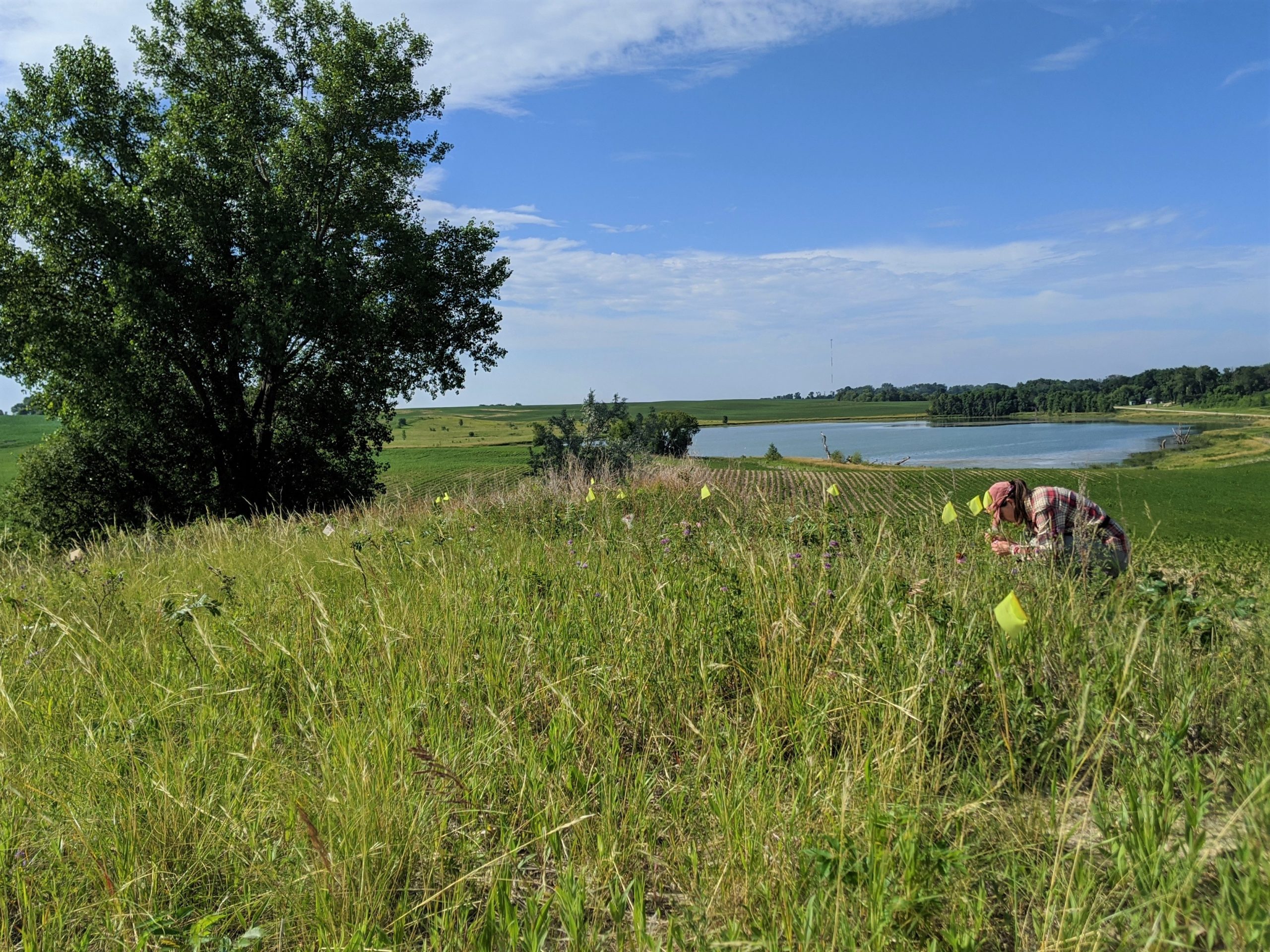This summer I started a new experiment to understand how the distance between plants in space and in their timing of flowering influences the fitness of their offspring. This experiment builds on my study of gene flow and pollen movement in the remnants, asking the question of how pollen movement patterns affect offspring establishment and fitness. If plants that are located close together or flower at the same time are closely related, their offspring might be more closely related and inbred, and have lower fitness than plants that are far apart and/or flower more asynchronously. In other words, if distance in space or time is correlated with relatedness, we’d expect mating between more distant or asynchronous individuals to result in more fit offspring.
To test this hypothesis, I performed crosses between plants across a range of spatial isolation (within the same population, in adjacent populations, and in far-apart populations). With the team’s help, I also kept track of the individuals flowering time so that I can assess whether reproductive synchrony is associated with reduced offspring fitness, suggesting that individuals that flower at the same time are more closely related.
I ended up using 42 focal plants (two of which were mowed before I could harvest them) and a total of 167 sires. I planted 359 offspring from these crosses in November. Next spring and summer, I will measure the seedlings to collect data on emergence and growth. Seed set was lower than I wanted it to be (only ~20%, when I would have expected 60-70% based on compatibility rates in the remnants), so I will also likely perform more crosses in summer 2021 to shore up my sample size.

Start year: 2020
Location: On27, SGC, GC, NGC, EELR, KJ, NNWLF, NWLF, LF
Overlaps with: phenology in the remnants, gene flow in the remnants
Data/Materials collected: 40 seedheads, style shriveling and seed set and weight from crosses, start and end date of flowering, coordinates of all individuals in the populations listed above
Products: I planted the seeds from the crosses in a plot adjacent to P1 in November, as detailed in this flog post.

Leave a Reply